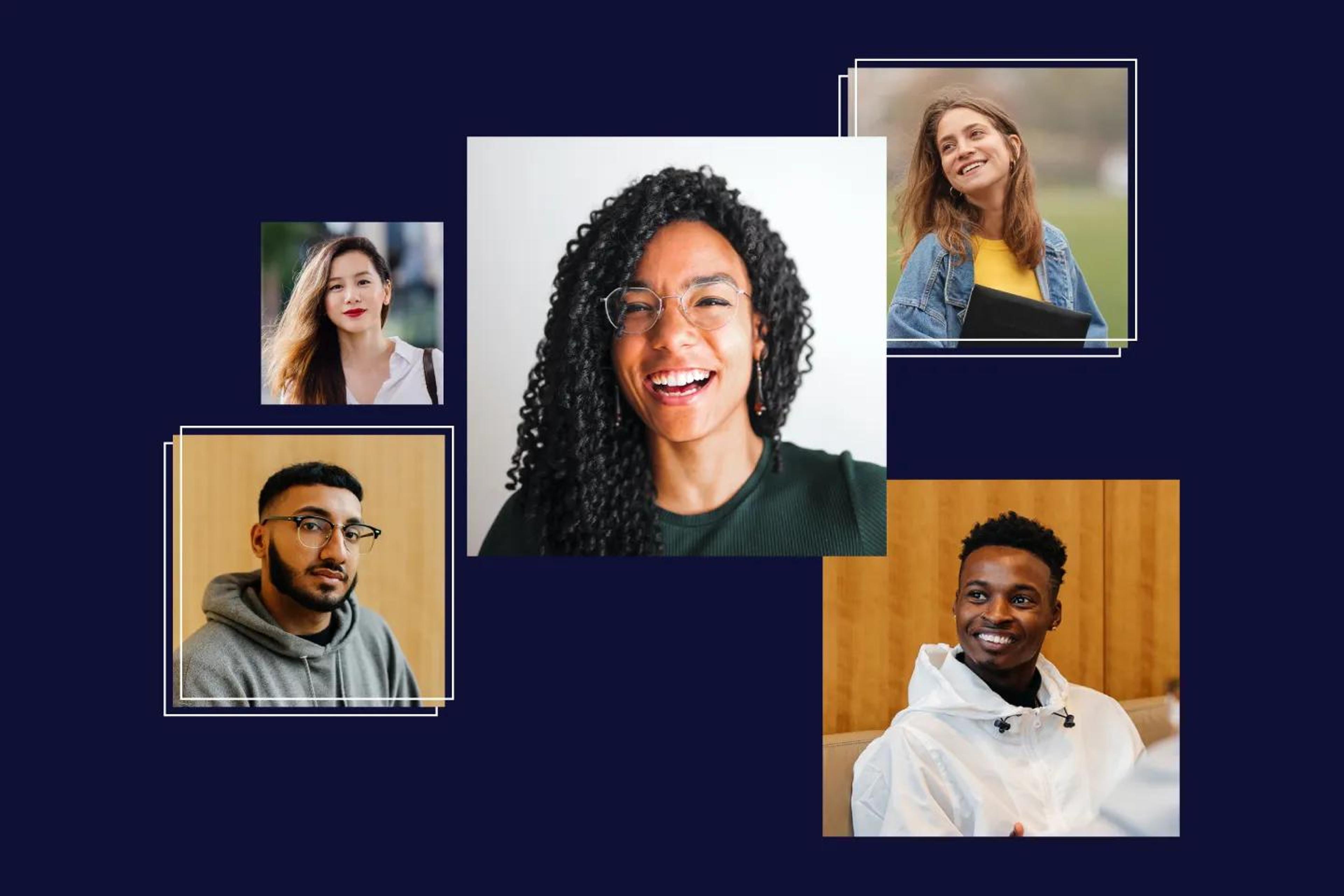The world changes quickly—and fresh challenges require fresh talent.
Early talent brings a lot of value to the table: they’re entrepreneurial and independent. They’re hungry and career-driven. They’re adaptable and eager to learn.
A Handshake Network Trends survey found the following about the class of 2023:
- 82% believe they can find a personally fulfilling job
- 2 in 3 are willing to change cities for the right job
- 35% are open to industries
No matter which industry you’re in or what types of roles you’re recruiting for, the most forward-thinking employers engage early talent well before they enter the labor market.
Your opportunity is ripe, particularly if you’re hiring for tech skills: for students with tech majors applying to internships this year, we’ve seen an 8.1% drop in applications to tech companies and an increase in applications for all other industries.
Connect with students and young talent sooner rather than later to support their growth and development, forge solid connections, and position your employer as a trusted partner throughout their college to career journey.
3 ways to support early talent from the classroom to the boardroom
How can you connect and engage with students of all ages and support their transition into the workforce—all while building a pipeline of skilled, engaged, and loyal early professionals? Get inspired by proven strategies used by Handshake Early Talent Award winners to support students on their journeys from college to career.
1. Build an effective internship program
When it comes to engaging young talent, it’s hard to overstate the importance of an internship program. Today’s internships should offer students opportunities to contribute and develop hard skills and soft skills, participate in networking opportunities, hear from leadership—and of course, have fun.
Internship programs are a proven strategy for building your brand early with students, while offering invaluable experiences to students' growth. They're also a key driver for filling your pipeline with early talent.
For example, 2x Handshake Early Talent Award-winning Comcast Central Division’s SOAR rotational program was designed as a post graduation entry point for interns to gain hands-on experience.
Many of our interns have helped shape how we operate as a business and as a team by creating new tools, systems, and processes that have ultimately been adopted into our standard business practices. Impactful outputs like those are what really began to turn heads and allow our leaders to see this new talent segment as a critical element of their workforce strategies.
Aryeh Lehrer, Comcast’s VP of Talent Management and Acquisition
2. Host (or participate in) educational events
Smaller-scale events and programs like bootcamps, panels, workshops, and seminars can also get your company in front of students and early career professionals while furthering their education. This is especially important for tech talent who are seeking technical certificates in addition to their primary area of study. Here are a few ideas and inspiring examples from 3x Handshake Early Talent Award winners:
- IBM livestreamed a panel discussion and Q&A with employees at the National Society of Black Engineers (NSBE) Convention and tours of its offices—and received 30x more applicants through Handshake during the week of the office tour livestream than its competitors.
- Gap Inc. targets first and second year students with learning experiences over the course of an event series to expose them early to functional tracks, professional development, and internship opportunities.
- Liberty Mutual offers a variety of event types, like skill-building experiences, talks on topics that are important to Gen Z, and tactical support (i.e. building out students’ Handshake profiles).
And don’t discount the impact of virtual office hours, quick screens, and even message exchanges to address students’ questions and keep them engaged. Another 3x Handshake Early Talent Award winner, CVS Health, shared that they find certain formats work especially well for certain roles; for instance, coffee chats for students pursuing tech roles. These interactions are less formal and not as education-focused, but are equally beneficial in sparking a supportive relationship with early talent.
3. Sow the skills you want to see in your pipeline
Employers want students to come out of college with the job-specific skills they need—and students want the same thing. One way to ensure the quality of candidates in your pipeline is to partner with schools and students long before they kick off their job searches.
For example, 3x Handshake Early Talent Award winner Kiewit has a Faculty Scholars program, where a college professor interns at Kiewit to take that experience back to the classroom and facilitate knowledge sharing to their students.
As another example, Dremere is a student who found an opportunity with 3x Handshake Early Talent Award winner GE Aerospace—which turned into multiple internships there. Dremere helped the team with a project to enable jet engine production, and he was able to see his projects implemented on the factory floor.
Handshake Early Talent Award winner and Tech Transformer Fidelity Investments has an upskilling program geared toward early talent to recruit students with tech skills.
These sorts of programs benefit students with a targeted, real-world education that ensures they’re career-ready. Partnering with schools on curriculums or programs, or ensuring experiential learning for students, you can build your brand early with Gen Z in a memorable way—that can help you stand out when the time comes for them to apply to roles at your company.
Get more tips in our article, 6 trends impacting women in STEM.
Invest in early talent (so they invest in you)
Gen Z is looking for ongoing professional development and clarity into career paths once they’ve joined your company. So start with supporting learning and development during their years a student to forges a strong connection and positions your company as so much more than a place where early talent can collect a paycheck.
All of these strategies help you engage and support early talent in their college years and even before—so that you’re a top-of-mind employer when they kick off their job searches.
You and your team can be a partner that’s committed to a student’s growth and success, now and well into the future.
Which of these 3 strategies does your company need help building? Let's discuss.

Diversify your workforce, from the classroom to the boardroom
For the boardroom to become more representative over time, create opportunities at the internship and entry level.
Learn more